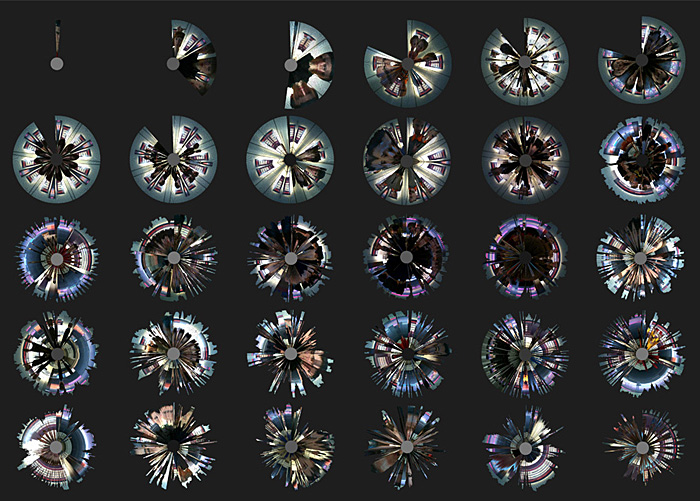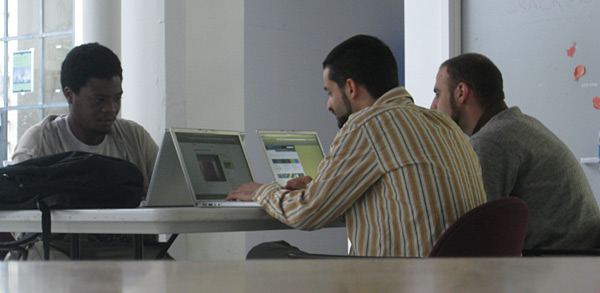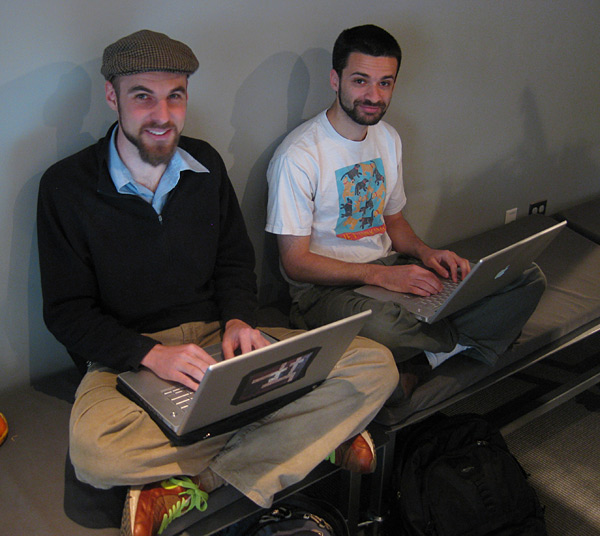MOTION CLOCK, STILLNESS CLOCK
 "Stillness Clock, Motion Clock", a collaboration with Eric Rosenbaum, explores the perception of time, in motion and in stillness. The slit-scanning technique is used to paint live video around a circle, mapping time onto space. The clock on the left responds to the motion of the viewer, leaving a jagged trace of activity over time. The clock on the right is active only when the scene is still, encouraging the viewer to watch in contemplative silence as their image slowly emerges. Does time pass more slowly when you are moving, or when you are still?  This piece was created at 'Processing Time,' a coding jam and competition organized by Assistant Professor of Digital Media Nick Montfort as part of the Boston Cyberarts Festival. The participants were invited to use Processing, a programming language for visual design that was created at MIT Media Lab, to create aesthetically pleasing displays of time. Eric Rosenbaum and I created our entry in just 4 hours (get the code here and try it yourself). Our piece won the audience award, programmer prize and "fame" award. It was shown at the MIT Museum from May 4th to May 10th as part of the 2009 Boston CyberArts Festival.  At the coding jam, Yannick Assogba, Eric, and Seth..  A few people reflcted on the right, and their motion paths on the left..  At the MIT Museum, viewers can walk up and see themselves in each of the clocks.  About us: Eric Rosenbaum has a background in neuroscience, music, and educational technology. Currently he is a graduate student in the Lifelong Kindergarten group at MIT Media Lab, where his research focuses on reflective learning and new interfaces for playful expressive inquiry. |